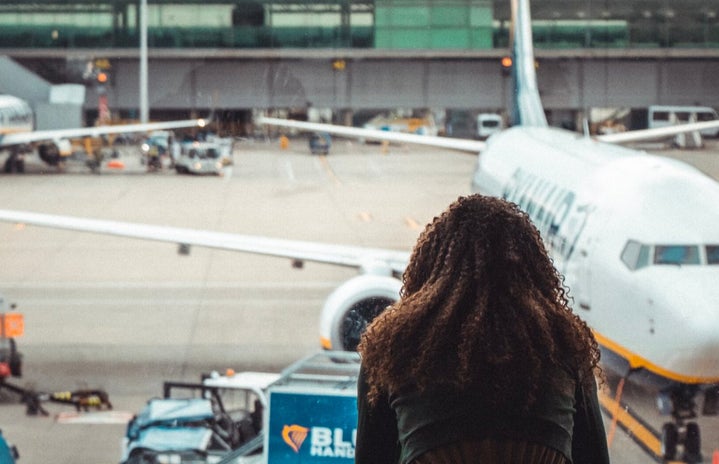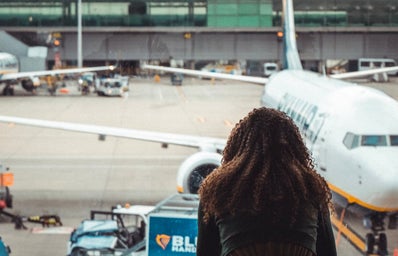Thanksgiving is almost here, and many of us have plans to head home for the rest of the semester. I am nervous about traveling and returning home, where I will be with my parents, as I could potentially come in contact with someone carrying COVID-19 during my trip. Since I am flying home, I am even more concerned because I will be enclosed in such a small space with others. Research shows that airplanes are not much more dangerous than other indoor spaces, but there is still a large risk of exposure to the virus, whether it be in the airport or on the plane. In the days leading up to my flight, I am preparing to be extra cautious for my travel home.
Airports can be very crowded, especially during the holiday season, and it can be difficult to avoid the masses of people when waiting in line for security or checking in to your flight. Experts are more concerned with travelers contracting COVID-19 before they get on the plane, as it is difficult to practice social distancing in highly populated airports. For this reason, it is especially important to remember to practice social distancing as much as possible before getting on the plane. Make sure to pack a carry-on bag stocked with supplies such as hand sanitizer and disinfectant wipes. Wearing a mask goes a long way, and taking the extra steps of wiping down your seat at the gate and sanitizing your hands after touching things will also decrease your chances of getting sick from someone in the airport.
While the airport and planes may seem like a hub of COVID-19 transmission, this has not been the case so far. Joseph Allen, an assistant professor of exposure assessment science at Harvard T.H. Chan School of Public Health, wrote an opinion piece for the Washington Post about the safety of airplanes during the pandemic. He believes that there is no heightened risk of getting the virus on a plane compared to any other place. Airplanes must meet ventilation system levels that the Centers for Disease Control and Prevention recommends for COVID-19 patients in airborne infection isolation rooms. While airplanes may not put passengers at greater risk of contracting the virus, they still serve as a transporter of the virus. Air travel at this point should only be used when essential, and passengers should plan ahead to stay safe while flying.
There’s no way of knowing who sits in your seat before you on a plane, and even though airlines are doing thorough cleanings of the aircrafts between flights, it is still smart to minimize your chance of infection by wiping down your area. If you choose to sit down at the gate in the airport, make sure to clean this space as well. Do your best to keep your distance from others and keep your hands to yourself, but be equipped with hand sanitizer just in case!
While Allen’s article includes strong points and makes me feel somewhat more comfortable as I get ready to fly home next week, it is still extremely important to take precautions in the airport and on the plane. Traveling by plane is not something to take lightly by any means, especially with the increasing number of COVID-19 cases in the country. Air travel has the potential to be relatively safe, but only if we do our part to make it that way. It’s on all of us to wear masks, practice social distancing, and clean our hands so that we can return to normalcy soon. Have a happy and safe Thanksgiving, and be careful while you travel!



